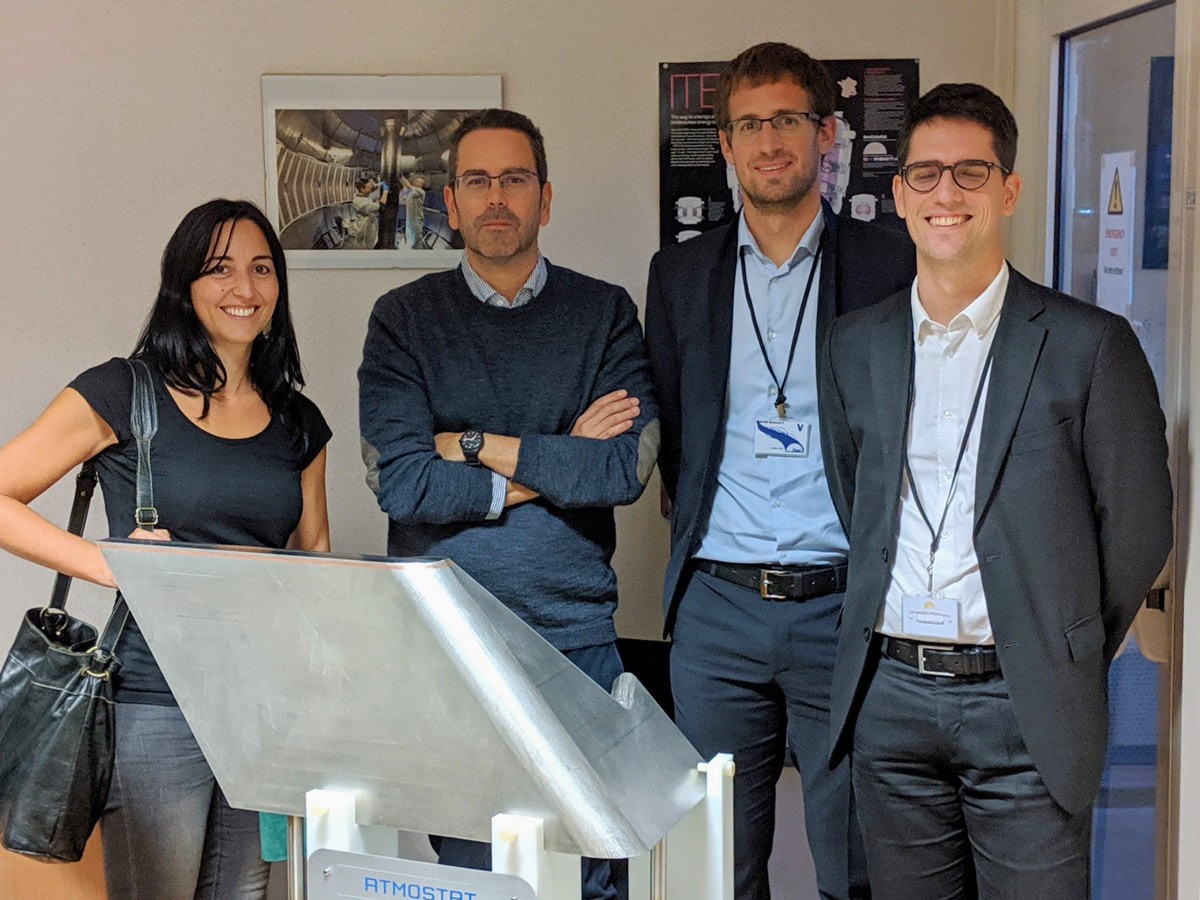Getting ready for the fabrication of Upper Launchers to heat up the ITER plasma

Europe’s Blanket Shield Module corner mockup, produced by ATMOSTAT, unveiled at the Final Design Review (FDR) Meeting
Think of the ITER super-hot plasma as a massive fireball trapped in a cage of powerful magnets. It must stay away from the surface of the vessel, keep burning and remain steady during the fusion reaction. Many parameters must be ensured and the stakes are high, especially when we are dealing with temperatures as high as 150 million °C. At times the hot gas will be unstable and some of its current will be lost. This is why we need additional pieces of equipment to act almost like a fire bazooka using microwave beams to compensate for these losses, and keep the plasma steady.
Four Electron Cyclotron Upper Launchers, under the responsibility of F4E, will each inject up to 8 MW of microwave power each to kick-start the plasma and keep it going. Through these “gates” the Electron Cyclotron will unleash its power. Last year, the final design review of the component was successfully completed. Years of conceptual design work, reviews, meetings with experts and collaborative partnerships with companies and fusion laboratories came to fruition. We are into the final stretch for the procurement of the component expected to be announced on the F4E Industry and Fusion Laboratories portal. The Upper Launcher mainly consists of the plug and the blanket shield module-an extremely sensitive interface with the plasma, and the mirrors, an internal optical system to guide the high power beam to its target spot in the plasma. Through the plug, which is 6 m long and weighs approximately 17 t, the waveguides will travel and will be eventually deflected in the vessel through the blanket shield. The final design of the port plug was carried out in F4E, building on the preliminary design developed by KIT and the ECUL consortium and with the support received by companies specialised in nuclear aspects. A range of manufacturing solutions was identified together with a rigorous process to qualify the components. The design was fully endorsed by the Final Design Review (FDR) panel and the outline of the procurement strategy.
“The approach we opted for required a lot of co-ordination and interaction between the different parties. But to our merit, through this process of consultation, we managed to reach agreement using expertise efficiently, making cost savings and ultimately developing complex prototypes like the blanket shield module”
Gabriella Saibene, F4E Programme Manager for Antennas & Plasma Engineering
A number of companies such as NIER, IDOM, ATMOSTAT and fusion laboratories like SPC and CNR contributed greatly to this endeavour. During the FDR, F4E and its industrial partners presented to ITER Organization a prototype of the blanket shield module. This plasma-facing component of the Upper Launchers will be able to withstand temperatures up to approximately 350° C during operation, using a state of the art cooling system, and an ultra-vacuum environment of the vacuum vessel through high-quality special metal joints (hipped joints). The successful prototype can be described as a stepping stone in the lifecycle of this complex component. The manufacturing of the port plug will require a combination of mechanical and heat components, high-quality forges, welding comparable to that of the vacuum vessel, optical elements and a very demanding qualification procedure. The launch of the procurement will open the race for its fabrication.